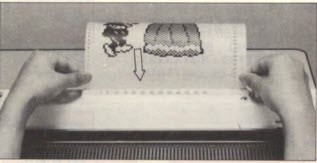4 Electronic Machines
The electronic machines have many patterns and motifs pre-programmed into the computer’s
memory and should come with a book of designs, pictured both as knit and in chart form. There are
alphabets, figures, animals, cars, and other designs in their console memories; and you will find that
it is hard choosing just one, almost like going to the yarn shop.
Single motifs can be placed in the location that you
choose and, like the patterns, can be rotated and combined. These patterns can be combined to create
interesting “new” designs: they can be rotated, flipped, reversed, or placed anywhere you choose in
your project.
Passap Machines
- The Passap Manual provides detailed instructions for adding original designs to the console memory.
- The Passap’s design book shows the designs knitted in several different combinations, any special instructions that are needed when entering the pattern, and the pattern charts which show (with black and white squares) the pattern as well as the pattern stitch dimensions
- The patterns are selected on the machine’s console which, like the mylar sheet reader, then electronically signals which
needle should be placed in working position.
- For the Passap, a heavy card is marked with a dark pen, then inserted behind a plastic sheet and fed
through the reader.
- It is also suggested to lightly mark the card that will be fed into the Passap
reader.
- It is possible to make quite a large design in this manner, as you can feed sections of a design
into the reader.
- The reader is very exacting, and it does require a steady hand and good eyesight to
produce the desired result.

